A 100-million-pixel sensor doesn’t just record finer textures; it brings a host of other advantages, too. Damien Demolder puts the new Phase One XF and IQ3 100MP to the test
Phase One XF and IQ3 100MP field test
Phase One XF and IQ3 100MP – At a glance
- 100MP, medium-format sensor
- 15-stop dynamic range
- New top-plate touchscreen
- ISO 50-12,800
- 3.2in, 1.23-million-dot-LCD screen
- Price: £4,858 (camera body), £31,375 (back), £35,990 (with 80mm lens)
When I joined AP in 1998, a lot of amateur photographers used medium-format cameras. Such people were big business for the companies that made these machines. We might not all have been using the top-flight brands, but Bronica and Mamiya did very well from non-professional users. Hasselblad, Fujifilm, Rollei, Contax and Pentax were all operators in the market, and their products were not always beyond the reach of the serious enthusiast. The main attraction was the size of the film – 6x6cm, 6×4.5cm, 6x7cm, 6x8cm and 6x9cm. It delivered better quality in larger prints, but the cameras themselves provided a different experience that changed the kind of pictures you took, and the speed at which you could work.
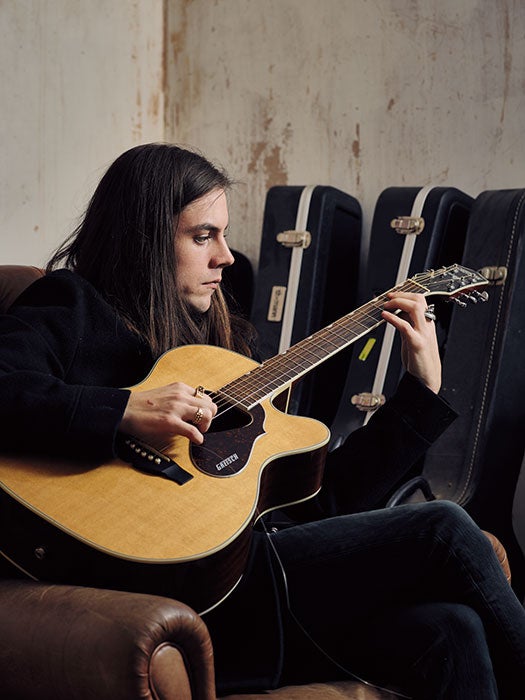
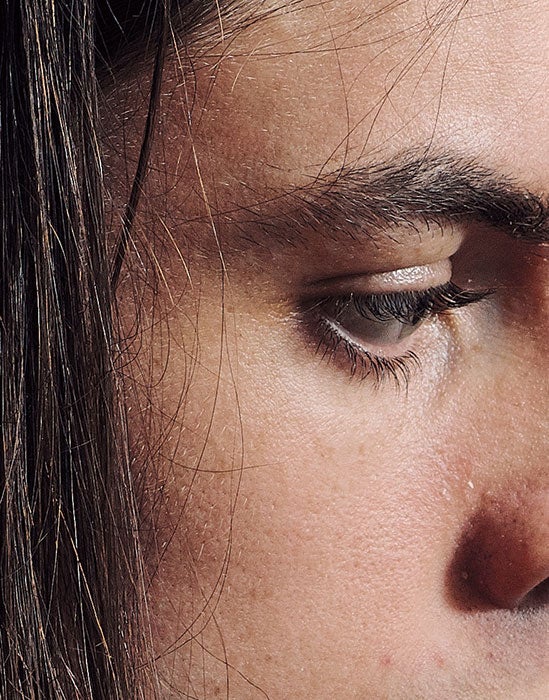
The astonishing resolution really brings out textures and fine details, but leaves no place to hide poor focusing and camera shake
Not all medium-format cameras were the same shape, of course. We had twin-lens models that you looked down into, single-lens reflex models that could take a prism finder and even rangefinders that looked like overgrown compacts.
At that time, Phase One made digital backs for medium-format cameras. The LightPhase backs were the beginning of single-shot digital images for medium-format users, and £15,000 would buy you a 6-million-pixel back that could turn out 10x7in images when sized at 300ppi. Phase One has clearly been doing something right, because while many of the traditional camera companies have gradually disappeared from the market, this Danish company has gone from strength to strength, offering backs, software and then branded bodies and lenses. At the end of last year Phase One bought Mamiya, the company it had partnered for those bodies and lenses. So Phase One can now rightly claim ownership of a complete capture system from optics to bodies to backs, and the processing/archiving software. That is quite something. The only element the company can’t make is the imaging sensors.
To gasps and sighs, Phase One announced at the end of last year that it was producing a digital back with 100 million pixels, and it would fit on the company’s new XF body. A 100-million-pixel sensor might seem a little excessive, but Sony wouldn’t have produced it if there were no demand and Phase One wouldn’t have bothered making a back for it if it didn’t have photographers lined up to buy it. So, what is it like to use, and what advantages does it bring?
Phase One XF and IQ3 100MP – Who needs 100MP?
To answer the question ‘who needs 100MP?’ we should consider what we require pixels for. Sounds silly, perhaps, but I suspect most of us think only of pixels as elements for recording detail, texture and lines – getting a bit further along the resolution charts. That is what we’ve been brought up to think and what camera tests most often concentrate on, but pixels also capture tonal values and colour, which are just as important.
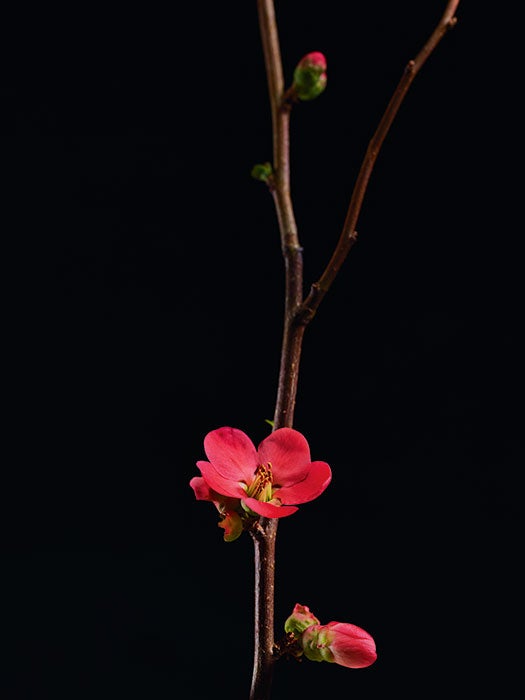
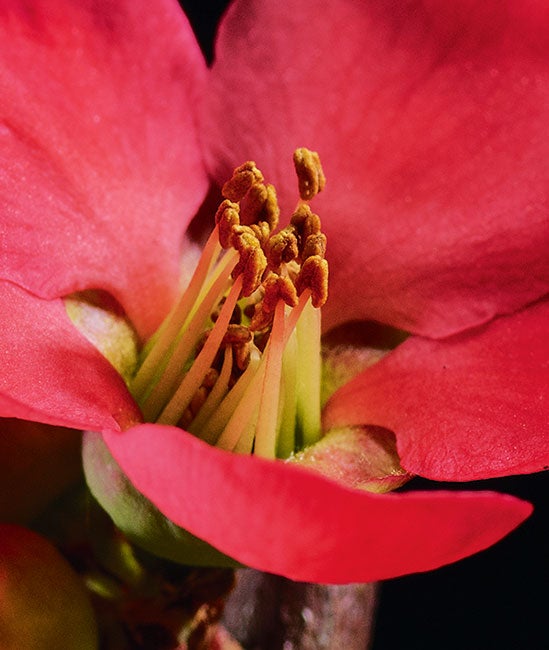
With 100 million pixels, an astonishing amount of detail can be recorded
Before I started using the Phase One XF with this IQ3 100MP back, I asked the company’s head of R&D, Lau Nørgaard, what sort of photographers need 100MP. His answer covered the obvious ‘people who need to make big prints that will be studied close-up’ as well as the less obvious ‘people who need to make lots of different images from one picture’.
His example of that was the person who shoots cars. That photographer will shoot the whole car and then all the details, but with a 100-million-pixel image you can take one shot and crop in to the wing mirrors, door handles and indicators, and still have large files for each detail. This saves time – and money. The resolution is suited to copying museum artworks for archiving and for detailed aerial mapping, but also for producing three-dimensional-looking images of subjects that have smooth tonal transitions. There are certain advantages to scaling images down, too, such as noise reduction, colour and the overall impression of detail and sharpness. These things all make more good pixels worth having.
Of course, we can get 50 million pixels in a Canon DSLR these days, but what the IQ3 back offers is larger pixels that collect more light and produce less noise. Canon’s sensor is a little short of dynamic range, while this Sony CMOS sensor has 15 stops to record the brightest sky and the darkest shadows.
Phase One XF and IQ3 100MP – Refined handling
This is a big and beastly camera that will demand a new bag to accommodate its oversized body and lenses – and the collection of batteries you’ll need. It is heavy and everything that goes with it is heavy, but it also feels as though it will last a lifetime. I have carried it around all day in a bag with three lenses, but really it is best to avoid that if you can. It is the kind of kit you take somewhere in the car, or on a trolley, or for shots where you don’t have to walk too far. There will be people who will take it up Ben Nevis, but I’d advise also having an assistant – or a donkey. It is quite unlike carrying a 35mm-style DSLR kit. You can handhold the camera, and it has been carefully designed to accommodate that, but to get the best from it you will need a tripod.
One of the great advantages of the CMOS sensor’s ISO range is that while a tripod is close to essential, studio flash heads are not any more. I tried to shoot at ISO 50 as often as I could, which was fine for non-moving subjects, but the shallow depth of field achieved with medium-format bodies means that we need f/8 for a portrait to get both eyes sharp, or f/11 when there are two people. When we are shooting at f/11 we need that extra ISO range to find acceptable shutter speeds.
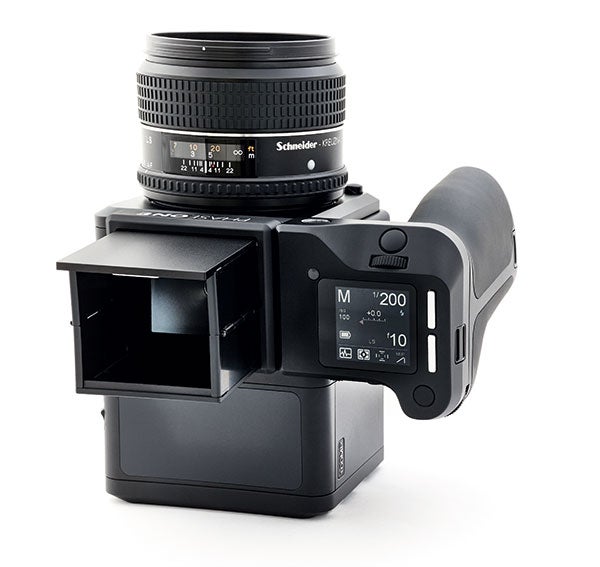
The control system is very much renewed in this camera body, with the old LCD screen on the top-plate replaced with a much larger touchscreen that makes working very much easier. ISO, shutter speed and aperture each get their own dedicated finger wheel – two at the back and one on the front – and exposure modes and exposure compensation are altered using the touchscreen.
Internal vibration is always going to be an issue with a camera that has such a massive mirror and such large moving parts, but the company has gone to some lengths to reduce the impact of these issues and to help us do the same. Pressing the shutter release now creates much less of a drama, as the mirror is very well damped and the shutter seems a good deal less clunky. The company says it has used materials in the body that dampen vibrations, although it won’t say what those are.
A really significant step is the inclusion of an electronic first-curtain option. This is activated automatically when we choose to shoot with the mirror up, or with the vibration delay mode switched on. Lau Nørgaard explained that the company’s engineers had studied the rate of travel and acceleration of the physical second shutter curtain and mimicked it with the motion profile of the electronic first curtain, so that the two match and the sensor gets an even exposure.
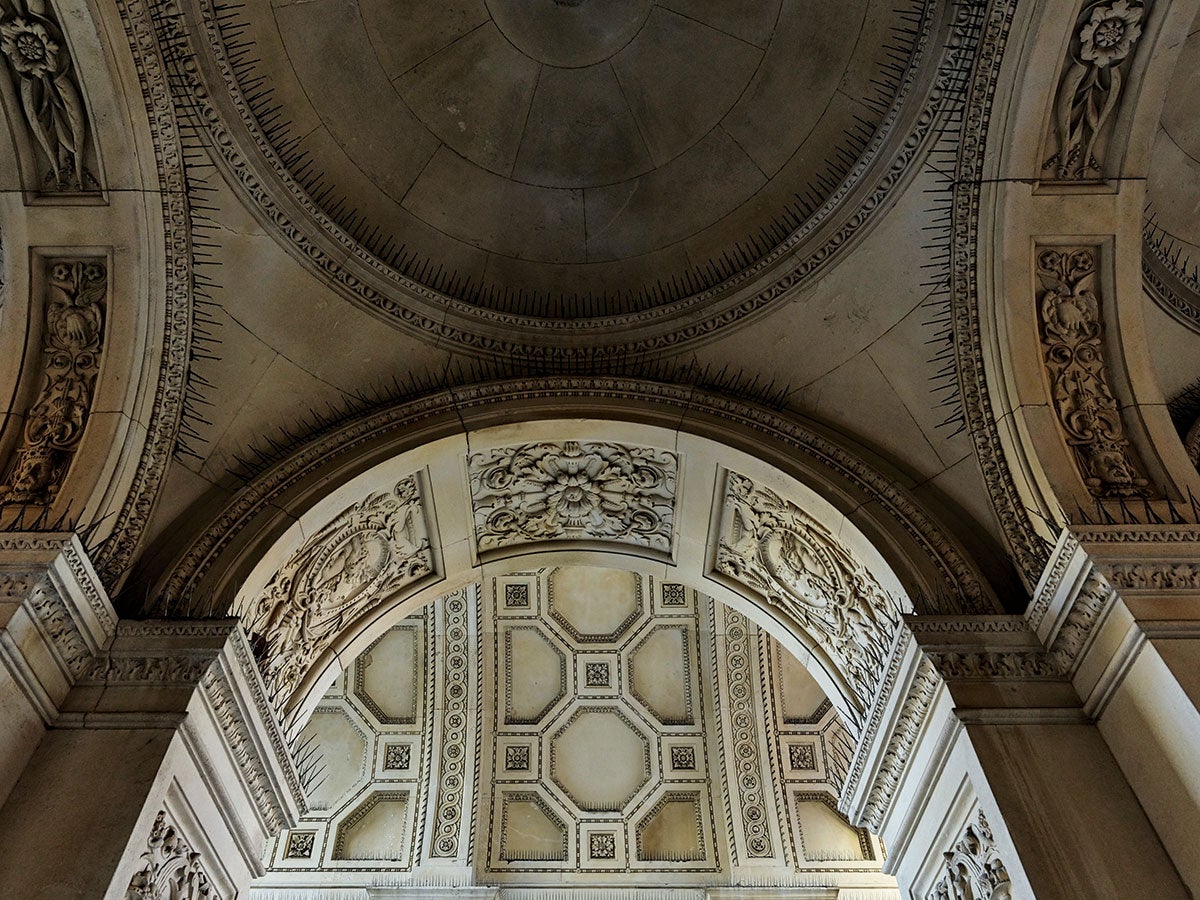
The massive dynamic range allows natural-looking images to be made from high-contrast scenes, without introducing excess noise into the shadows
Phase One has also incorporated a seismograph to help avoid camera shake in images. The seismograph detects and reports vibrations in the body, and can be used to control when the shutter is allowed to fire. A kind of self-timer lets us link the seismograph to the shutter trigger, and we can set the time we want to wait for vibrations to subside – four seconds, for example. If the camera has stopped vibrating before the four seconds are up, the seismograph reports it is safe to shoot and the shutter trips. This mode works with the mirror in the up position, but even in normal shooting it is simple to press the mirror-up symbol on the LCD to avoid the shock waves that it inevitably introduces.
The perfect way to use the camera is with it tethered to a computer. The Phase One Capture One Pro 9 software comes free with the body and allows a live-view feed on-screen, and gives us control panels that access all the features and functions of the camera and back. You can focus by tiny increments directly from the sensor, and check focus immediately the recorded images arrive on the computer. As Capture One is also a more than excellent manipulation package, you can perform the adjustments you want on one image and then as the next images you shoot arrive, they take on the same changes, so you don’t have to adjust curves, for example, for each individual image.
Phase One XF and IQ3 100MP – Image quality
I’ve used the medium-format 50MP CMOS sensor in the previous Phase One IQ250 back, and in the Hasselblad H5D-50c Wi-Fi, but neither comes close to what this back can produce. Eyelashes in full-length portraits can be counted and in a shot of a dress from across the room the weave of the lining material can be inspected. There were very few occasions when the detail of the subject defeated the resolution of the sensor and lenses, and to find those I had to inspect the undulating folds of finely textured materials.
The detail is astonishing, but more than that, the dynamic range allows so much to be captured in a single frame that only the most extreme conditions will leave you with areas of pure white or black. I shot a building in a shady street and included the bright sky, and in the resultant image was able to draw detail in both, so neutral density graduated filters will not be nearly as necessary for landscapes as they are with most cameras. It is hard to get an exposure so wrong that the file can’t turn out a decent image and quite extreme contrast manipulations can take place without banding appearing.
The colour can also undergo dramatic changes, and it hardly matters under what lighting conditions you work. Colour is recorded, stored and worked in 16 bits, and even difficult hues are represented with accuracy.
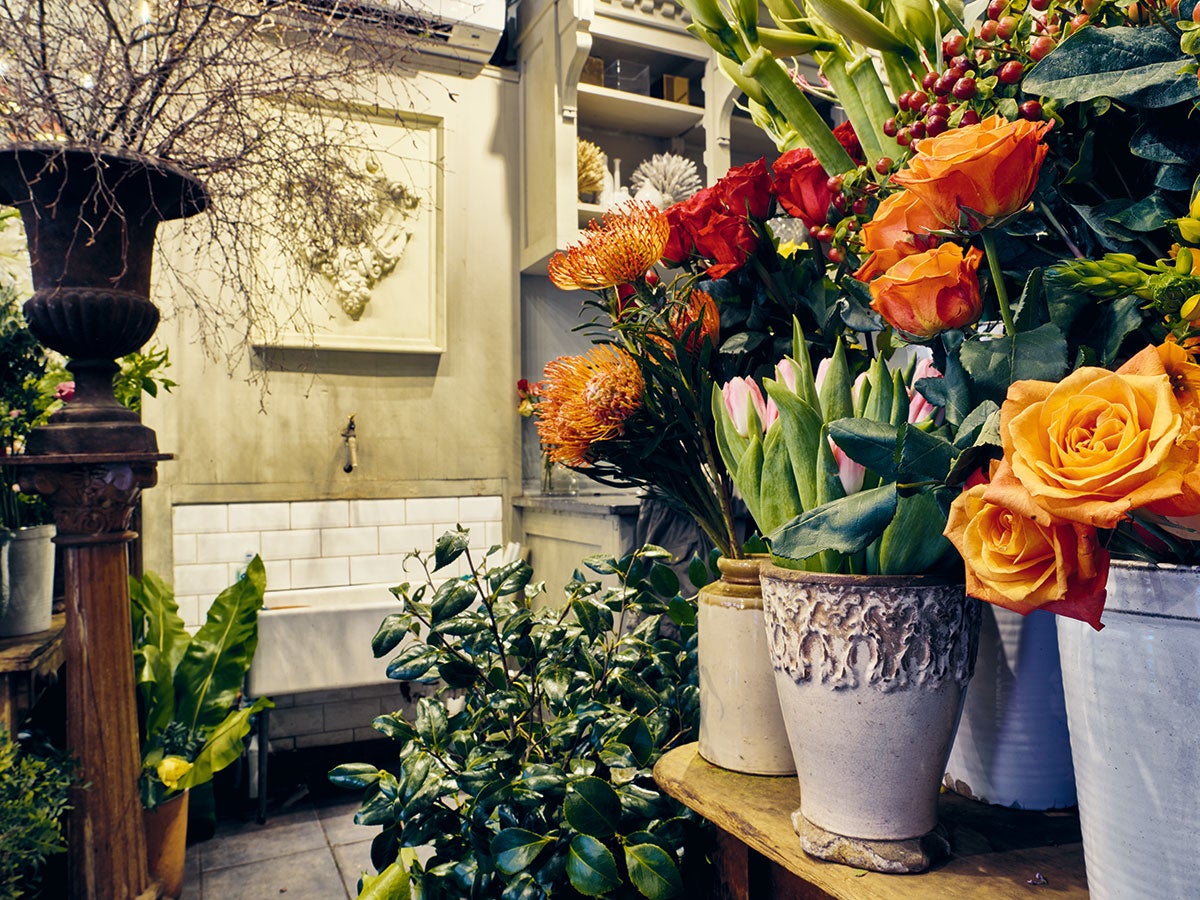
The 16-bit colour environment allows even difficult shades to reproduce well, and dramatic white balance shifts to be achieved with no ill effects
The camera allows us to restrict the range of shutter speeds, apertures and ISO settings we want to use. I’d been getting familiar with the mode and had forgotten to switch it off, so I accidentally started a shoot using ISO 6,400 instead of ISO 50. The short shutter speeds gave the game away after a couple of frames, and I quickly switched back to ISO 50. Afterwards, though, I compared the two. Viewed at 100% the difference in noise was quite clear, although the ISO 6,400 version was surprisingly clean for the setting. However, when viewed at 25% the differences were really not so obvious. If you were to print the ISO 6,400 version to 20x15in the noise would hardly be visible at all. That is another benefit of having such a high pixel count.
The biggest pitfalls with this camera are missed focus and camera shake. The camera only has focusing points in the middle of the frame, so if you are aiming for an off-centre subject and a wide aperture, while handholding, you have your work cut out. The ‘focus and recompose’ process just doesn’t work, even with a standard lens. Meanwhile, handholding at 1/125sec is still a massive risk. You can blow the image up more, remember, and suffer the visual humiliation that is created by a vibrating camera. Of course, if you don’t print so big, the focusing-shake issues aren’t so bad, but blowing up big was why you bought a 100MP back.
If you are tripod mounted, and even without being tethered, you can use the rear screen for live-view manual focusing anywhere in the frame, but the AF system still seems rather dated. Phase One is using a two-dimensional AF sensor that can ‘see’ from two angles to improve accuracy, but that doesn’t help speed or an inability to operate in low light.
Phase One XF and IQ3 100MP – Final thoughts
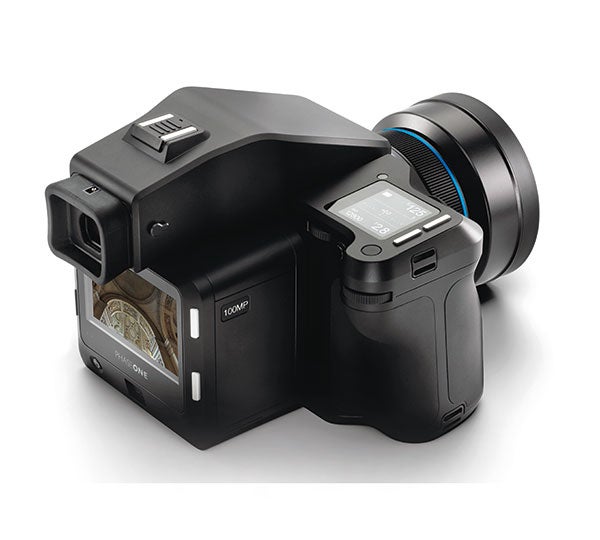
It’s not that long since we were told we’d never need more than 12 million pixels. Whether we do or not is another discussion, but the ‘all you’ll ever need’ mantra is always the haven of a company that has no more to offer at that moment. We really were amazed once by 11MP sensors, but then amazed again by 16MP, 24MP, 36MP and then 50MP. All the while we discussed the necessity for this growth in pixel counts, as what once amazed us became commonplace and then old hat. Now we accept that 24 million pixels is a lot, but chances are that most of us will soon be using a camera with a 36MP sensor.
I think it is useful to remind ourselves of the ‘incredible-credible-incredible’ cycle of how we perceive the sensors we use. While 3MP was incredible when the Nikon D1 was launched in 1999, it quickly became the norm and now we find it incredible that we were satisfied with such low quality. It might seem far-fetched that one day we will scoff at a 100-million-pixel sensor, but the evidence of our recent past suggests that not only is it possible, it is likely and almost inevitable.
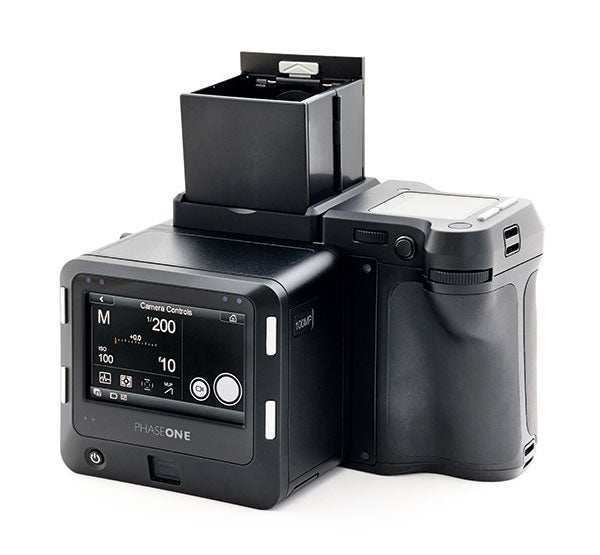
While in the earlier days of digital photography we could imagine better quality because we had seen it when we used film, this camera system produces images that are way beyond film or indeed anything else that I’ve experienced before. The pixel count is useful for so much more than just capturing fine details, as tonal transitions, noise and colour all benefit in a way we don’t usually measure.
The Phase One XF is a fine body and much improved over the previous 645DF+. Compared with modern DSLRs it is a bit old-fashioned still and less flexible, but it stands out from the medium-format pack with its flexibility, great handling and clever functionality.
The problem, of course, is that the Phase One XF with this IQ3 100MP back costs about 12 times what we’d expect to pay for the Canon EOS 5DS and a nice standard lens. At £36,000 for body, back and the 80mm lens it is a serious price, but by the end of the test I was working out how I could justify buying one. You see, you think you don’t need a 100MP back until you use it – then you wonder how you managed without for so long.





